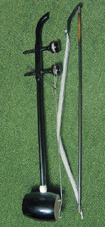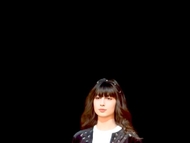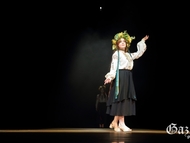 Mysterious Sounds Made By Two Strings “Haegeum”
Mysterious Sounds Made By Two Strings “Haegeum”Haegeums are stringed musical instruments that produce sound by rubbing two strings with a bow. Haegeums have characteristics of both wind and string instruments. It can be defined a wind instrument by its structure and a string instrument because of its two strings. Haegeums can be played solo or as part of an ensemble. They usually play folk music and wanderer's music and also accompany singers and dancers.
Haegeums have many unique characteristics. Haegeums are about 66cm in length and have two strings. Though they have only two strings, they have a wide range of two and a half octaves. Korean musical instruments are usually made of two or three of these eight materials: gold, stone, silk thread, bamboo, gourd, soil, hide, and wood. Haegeums are made from all these materials.
The thick string is called Junghyun and the thin string Yuhyun. The other parts of the Haegeum include: the cylindrical body, the Jua, the Bokpan, the Wonsan, the Ipjuk, and the fiddle bow. The Jua tightens the two strings. One side of the cylindrical body is hollow, the other is flat and is known as the Bokpan. Sound echoes though the Bokpan. The Wonsan elevates the strings above the body and various sounds are produced based on its position. The Ipjuk functions as a handle and neck. The fiddle bow is made from horse-tail hair. The fiddle bow is always inserted between the two strings.
 It is important to hold the Haegeum naturally. The player holds the Ipjuk and the two strings with their left hand while pushing and pulling the fiddle bow with their right. The Haegeum is laid vertically on the left knee.
It is important to hold the Haegeum naturally. The player holds the Ipjuk and the two strings with their left hand while pushing and pulling the fiddle bow with their right. The Haegeum is laid vertically on the left knee. In the latter 19th century, the Haegeum Sanjo was created. Sanjo is creative improvised music that combines various pre-existing melodies with a new improvised melody. It does not just copy existing music, but creates new original music. Haegeum Sanjos give us a comfortable and friendly feeling as if we are listening to an old tale. Haegeum Sanjos are divided into two types: The Ji Young-hee and the Han Beom-soo. The Ji Young-hee is based on the rhythm of shaman dance music from Gyeonggi province. The Han Beom-soo is based on the rhythm of shaman dance music from Jeolla province. Today, new crafting techniques are adding to the Haegeum’s range. Higher-pitched and lower-pitched Haegeums are being developed.
Haegeums have many nicknames including: Kkangkkangee, Kkengkkengee, Aenggeum, and Haenggeum. The first two names are similar in sound to the sound of the Haegeum, the latter are similar to its official name. These nicknames imply that not only the nobility, but also the lower classes played this musical instrument.
The National Center for Korean Traditional Performing Arts holds a Haegeum festival every year in October. In this festival we can enjoy the clear ringing sound of the Haegeum and the graceful magnificent Korean traditional ensemble combined with other musical instruments. You can also experience cross-over music as traditional Korean instruments and ensembles combine with Western acoustic and electronic musical instruments to produce exciting new sounds.








